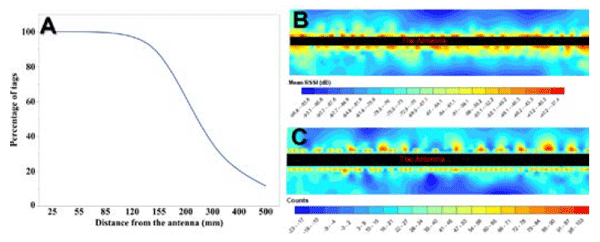Validation of a Radio Frequency Identification (RFID) System for Aviary Systems
Published: August 11, 2022
By: T.Z. SIBANDA 1, B. DAWSON 2, M.WELCH 3, D. SCHNEIDER 3, J. BOSHOFF 4,
M. KOLAKSHYAPATI 1 and I. RUHNKE 1 / 1 School of Environmental and Rural Science, Faculty of Science, Agriculture, Business and Law, University of New England, Armidale NSW, Australia; 2 Science Engineering Workshop, University of New England, Armidale NSW, Australia; 3 School of Science and Technology, Precision Agriculture Research Group, UNE, Armidale NSW, Australia; 4 Computation, Analytics, Software and Informatics, UNE, Australia.
Radio Frequency Identification (RFID) technology has been used for animal behaviour and welfare research, to monitor animal location and resource utilization. The aim of this study was to develop and validate an in-house custom built ultra-high frequency (UHF) RFID system to be used on a commercial free-range egg farm with three-tier aviaries. The system was designed and constructed to detect hens in certain areas (feeders, nest boxes, range) within the housing system. Briefly, Speedway R420 RFID isotropic tag readers (Impinj, Seattle, WA, USA), Monza R6 UHF RFID Tags, (Impinj, Seattle, WA, USA) and Clear Stream RFID software developed by Portable Technology Solutions (Calverton, New York, USA) were used to identify and track individual hens. The antennae were tested at a frequency of 900 mHz using 60 randomly selected RFID leg bands for signal strength with Received Strength Indicator (RSSI) values at varying vertical and horizontal distance (0, 25, 55, 85, 120, 155, 200, 300, 400 and 500 mm). Furthermore, 18 randomly selected hens on-farm were equipped with 2 tags each (one on the left leg, one on the right leg) and the number of events and time duration of these tags were observed for 30 consecutive days while being exposed to 27 antennae through the RFID system. The data from the tags were fitted into a general linear model using JMP, version 14, SAS Institute Inc., Cary, NC, 1989-2019.
Figure 1 - (A) Inverse square law curve fit of the tag read accuracy of the antennae in relation to the distance from the antenna. (B) Bivariate density plot of the average signal strength (RSSI)/ second and the distance from isotropic antennae of the tested tags. (C) Bivariate density plot of the count read and the distance from isotropic antennae of the tested tags.

The highest signal strength of -37.4 dB was recorded at 25 mm from the antenna. At this distance, 100% of RFID tags were recorded (Figure 1). At a distance of 500 mm, no significant signal strength could be recorded (P > 0.05). There was a significant detection reliability of two tags attached to one hen (one tag in each leg) in the number of events (R2 = 0.66; P = 0.0001) and time duration (R2 = 0.53; P = 0.0001). This was most likely because both legs of a hen are rarely at exactly the same distance from the antenna, due to the orientation of the RFID microchip, or due to potential signal interference with the metal construction of the aviary system. In conclusion, the system was effective at reading the tags at a distance of 155mm with 90% accuracy and the results show potential for the system to be used indoors.
ACKNOWLEDGEMENT: Australian Eggs and the Poultry CRC funded this project.
Presented at the 31th Annual Australian Poultry Science Symposium 2020. For information on the next edition, click here.
Content from the event:
Related topics:
Authors:
University of New England
University of New England
University of New England
Recommend
Comment
Share

Would you like to discuss another topic? Create a new post to engage with experts in the community.








.jpg&w=3840&q=75)